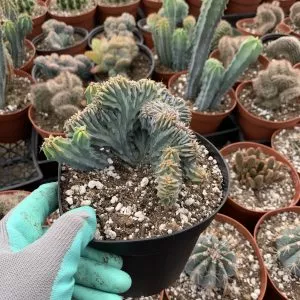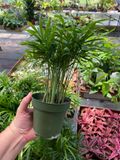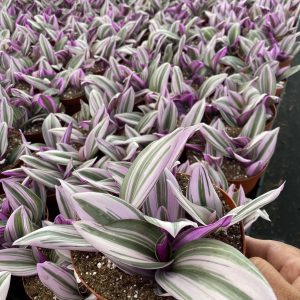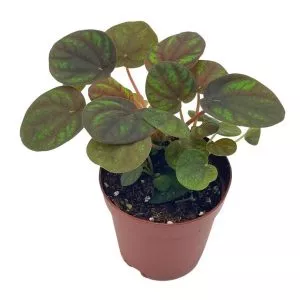No products in the cart.
Table of Contents
Did you know Gardenias are best known for their incredible white flowers and intoxicatingly sweet scent? They’re attractive decorative shrubs with a reputation for being picky. Gardenias necessitate a lot of upkeep in some places. But we are here to help.
What Is A Gardenia Plant?
They are evergreen shrubs and small trees reaching 1–15 meters high. The dark green leaves are opposite or in three or four whorls. It also has a glossy, leathery feel! White or pale yellow flower buds bloom singly or in tiny clusters.
Many species are intensely sweet scent and flower from mid-spring to mid-summer! Gardenia plants also appear to be stunning fragrant white flowers in floral arrangements in the language of flowers! It does bring honor and represents feminine beauty.
The biblical figure Solomon is reported to have given each woman in his harem a Gardenia flower every morning. This was done to alleviate tensions and jealousy. Between the rose and the camellia, the Gardenia exudes femininity with beauty and delicacy!
Giving a Gardenia to a loved one is thus a show of good taste and courtesy. Is growing Gardenias already fascinate you?
Well, then, let’s learn more below!
Gardenia Plant Care Basics
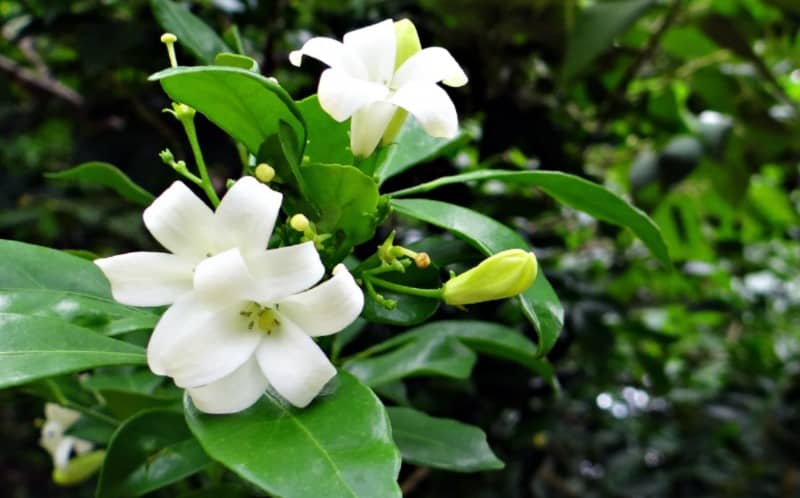
Before we give you the key tips for growing this rare plant, here’s a little overview of them. I promise it can be a great help!
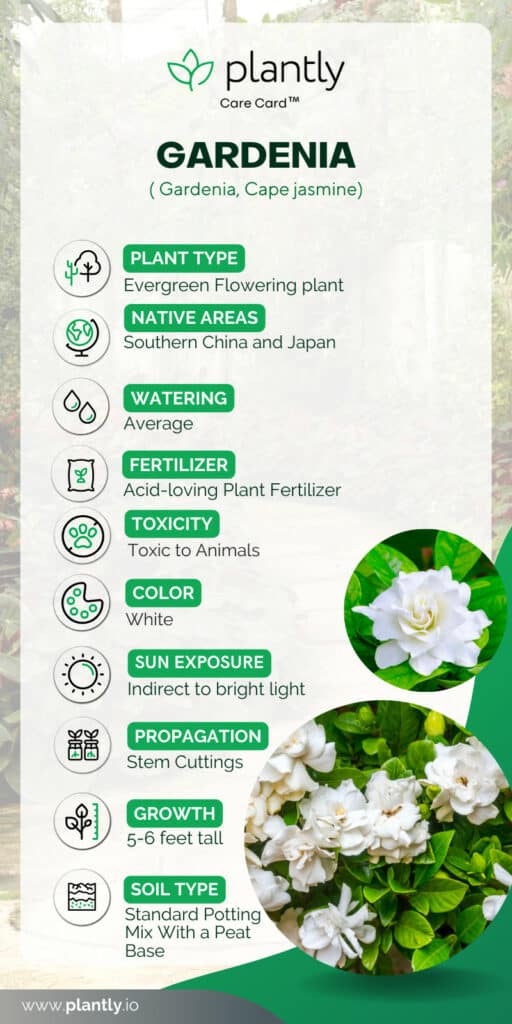
Now that you are introduced to these Gardenia shrubs, let’s find out the tips on how to effectively care for these flowering plants! Enjoy!!
Plant Gardenias in Well-Drained Soil
Gardenias are acid-loving plants; thus, they demand soil with a slightly lower pH, which is met by standard potting mixes with a peat basis. The pH of the soil should be between 5.0 and 6.0.
Plant Gardenias away from a concrete wall or foundation, as the pH there may be too high for optimal growth. Ensure your blooming Gardenia has a moist potting mix but is not waterlogged.
Pro tip: Gardenias appreciate nutrient-rich soil. To help your plant flourish, add plenty of organic matter to the soil, such as peat moss or manure.
Gardenia Shrubs Light

Place the Gardenias in a bright location. Gardenias thrive in full sun to light shade, although they can be burned by too much direct sunlight, especially in hot southern regions. So, if you live in a hotter area, plant the Gardenias where they will get direct morning sun and moderate afternoon shade.
On the other hand, Gardenias should be planted in full sun if you reside in a cooler region.
Pro tip: Indoor Gardenias should be placed where they will receive 6 to 8 hours of bright, indirect light.
How to Water Gardenias
Maintain a consistent moisture level in the soil, but avoid overwatering or allowing puddling. Water Gardenia once a week with one inch of water. During the growth season, keep the soil uniformly moist; in the winter, keep it somewhat drier.
Overwatering is the most common cause of yellow leaves on gardenias. If you water the flowers instead of the bushes, the blossoms will also turn brown. So, allow the soil to dry somewhat between waterings and use a pot with a drainage hole.
Pro tip: Apply a 2-4 inch layer of organic mulch to keep the soil moist and the temperature consistent.
Temperature & Humidity
Gardenias thrive best in temperatures between 65 and 70 degrees Fahrenheit during the day (18-21 degrees Celsius). And it’s 60-65 degrees Fahrenheit (15-18 degrees Celsius) at night. Keep in mind that if the ideal temperature is not maintained, flower buds will not form. Also, if the weather decreases, stay away from cold drafts.

Humidity of more than 60% is ideal for Gardenias. You can place the pot on a tray of moist stones or use a room humidifier. In the summer, misting is also a wonderful idea. When misting Gardenias, make sure to mist the leaves rather than the flowers!
How to Feed Gardenias?
During the growing season, fertilize your plants to keep them healthy and blossoming. Feed acid fertilizer to garden plants in warm climates in mid-March, then again in late June. Gardenias should not be fed in the fall. Feed them every two weeks with a half-diluted high-potassium, iron-containing fertilizer. To avoid fertilizer burn, only fertilize when watering!
Propagation
Fresh stem cuttings can be used to propagate Gardenias. These cuttings should come from a strong, vigorous plant with no symptoms of disease or weakening. Don’t worry if you’re a beginner! Just know these easy steps and you can master them in no time!
Here’s how you will propagate Gardenia jasminoides:
- Take a 3- to 4-inch cutting of a stem tip in the early spring, just below a leaf node.
- Plant in a mixture of potting mix and perlite after dipping the cut end of the stem in rooting hormone. Keep the gardenia cutting in bright but indirect light and at a temperature of roughly 75 degrees Fahrenheit. (The temperature is 24 degrees Celsius).
- Make sure the peat/sand mixture is humid but not dripping wet.
- Keeping gardenia cuttings in high humidity until they root is a crucial aspect of successfully growing gardenias.
- In four to eight weeks, the plant should be rooted and transplanted into 3-inch pots to continue growing.
Growth Zone

You can plant Gardenias in Zones 8-11. Hardier frost-resistant cultivars may be planted in zone 7 and can withstand temperatures below freezing.
Use Gardenias as luscious summer container plants on patios and front porches in zones where they are not winter hardy, or as temporary transplants in the garden, relocating them to a sheltered place as fall approaches. Gardenias can also be grown in pots on a balcony or treated as an indoor plant in a brightly lighted space.
Potting and Pruning
Gardenias should be planted in containers in a good-quality peat-based potting mix. Repotting your Gardenia in the spring or every other spring, as needed, is also a smart idea.
Gardenia plants can be pruned in late winter to keep them in good form. Just above a node, cut the stem at an angle (the place where a leaf or branch is attached to the stem). To avoid damaging the stems, always use sharp pruners!
In stock In stock In stock In stock
Free Shipping
$45.00
Sold By:
Cacti and Exotica
Myrtillocactus cristata—-Blue Candle Crested
Only 4 available and it’s in 3 people’s basket Rated 4.98 out of 5 based on 59 customer ratings00
Sold By:
Cacti and Exotica
$25.95
Sold By:
SunSoul Plants
$49.95Philodendron erubescens Red Emerald Plant in 4″ pot
Rated 4.87 out of 5 based on 98 customer ratings00
Sold By:
SunSoul Plants
Free Shipping
$145.00
Sold By:
Andygarden2023
long neck russell avocado 4ft tall
Only 10 available and it’s in 1 people’s basket
Sold By:
Andygarden2023
$12.00
Sold By:
Smoot's Farm
Palm Parlor Neanthe Bella or Chamaedorea elegans 4″ Pot Live Plan
Only 5 available and it’s in 1 people’s basket Rated 4.89 out of 5 based on 27 customer ratings00
Sold By:
Smoot's Farm
Gardenia Varieties and Similar Plants
If you’re looking for more similar plants like this beauty, there are several varieties of this plant because it has been widely cultivated.
Here are some of those:
Gardenia jasminoides ‘Aimee’
This type of Gardenia is a big evergreen shrub with lustrous, lance-shaped, dark green leaves and delightfully scented, ivory-white, extremely double, roselike flowers. It is also known for its massive blossoms. With double, four- to five-inch flowers, this is one of the largest gardenias!
The cultivar is also known as ‘Aimee Yoshida’ and is sold under the ‘First Love®’ label.
Gardenia jasminoides ‘Buttons’
This is one of the more substantial cultivars, as well as one of the most prolific bloomers. Its four-inch double blossoms are frequently compared to camellia flowers.
Gardenia jasminoides ‘Jubilation’
The Jubilation Gardenia grows 3 to 4 feet tall and 3 feet wide, making it an ideal dwarf size. The Gardenia blooms in three different seasons! The white, fragrant blossoms appear in the spring and continue to bloom throughout the summer and even into the fall!
Gardenia Plant Diseases & Pests
Gardenias are sensitive to a variety of illnesses, insect pests, and other difficulties, in addition to problems caused by poor growing circumstances. And it is essential to know them to properly take care of before causing too much damage to the plant.
Pests
Whiteflies:
They resemble small moths and have a powdery white look. When the wings are at rest, they are kept at an angle over the body, like a roof. Whiteflies can be controlled with insecticidal soap or horticultural oil sprays, but the plant must be fully treated such that the soap or oil reaches the insects on the underside of the leaves.
Scale Insects:
Gardenias are eaten by a variety of scale insects, including soft scales like the Japanese wax scale and cottony cushion scale. Scale insects are normally kept in check by a mix of natural enemies such as ladybird beetles (ladybugs) and parasitic wasps. Scale can be scraped off of light infestations, and infested branches can be cut and killed.
Aphids:
They come in a variety of colors, including green, yellow, pink, and black, depending on the species. Aphids use their piercing-sucking mouthparts to feed on plant sap. Parasitic wasps, ladybird beetles (ladybugs) and larvae, and green lacewing adults and larvae are all-natural enemies of aphids.
Except in cold weather, their natural enemies manage to keep aphid populations in check.
A vigorous stream of water directed above and below the leaves can be used to hose off aphids. Spray with water on a regular basis, repeating as needed, and concentrating on new growth.
Diseases
Root rot:
Root rot is widespread in plants that are overwatered on a regular basis or in soil that drains poorly. A number of fungal diseases take advantage of the stressed plant and destroy root tissues, turning them brown, black, or mushy in the process.
Plants with root rot can often be saved by digging them up, cutting away the diseased roots, and transplanting them elsewhere with greater drainage.
Stem Canker:
Only a small number of gardenias are affected by stem canker each year, but it’s a hazardous disease that every grower should be aware of. When the fungus Phomopsis gardeniae gains access through wounds, it causes these black, oval lesions. The only way to stop it is to cut back into good tissue and remove the afflicted stems.
Bud drop:
Bud drop is common in stressed gardenias, but it can be perplexing to gardeners unfamiliar with the phenomenon. The principal symptom is the bud and blossom failure, as the name says — they just drop or dry up, leaving few additional symptoms.
If there are no insects, you may need to change your watering habits, fertilize more carefully, or provide better protection against sudden cold spells.
Frequently Asked Questions
Gardenias are evergreen flowering plants that are hardy in zones 7-11. Their fragrant white flowers bloom from late spring to fall and stay for a long time. Before withering, each flower can last several weeks.
If you really want to keep your Gardenias bloom year-round, you may want to them warm at all times. Gardenias grown inside can bloom all year if the temperature is regulated between 65 and 75 degrees Fahrenheit during the day and 55 to 65 degrees Fahrenheit at night.
These acid-loving plants will benefit from the addition of coffee grounds, tea bags, wood ashes, or Epsom salts to the soil, in addition to compost or aged manure. Coffee grinds are a better homemade gardenia fertilizer since they are high in nitrogen, magnesium, and potassium.
Indoor plants perform their best when receiving direct sun in the morning with afternoon shade. The more sun exposure they receive, you can enjoy the fragrant flowers as too little light makes them grow leggy.
Please provide them with about an inch of water while keeping the soil evenly moist but not soggy. When growing indoors, you may need to water more depending on the temperature and humidity.
Deadheading the faded flowers is a good idea as it helps prevent them from setting seed. At the same time, they will produce more blooms.
Whether you want to buy, sell or simply reach out to other plant enthusiasts, Plantly is the right place to be!
-
$5.50Sold By: Plants by Stinky Boo
In stock
Crassula ‘Pangolin’
Rated 5.00 out of 5 based on 2 customer ratings00Sold By: Plants by Stinky Boo -
$21.99Sold By: Cacti and Exotica
In stock
Tradescantia nanouk
Only 10 available and it’s in 1 people’s basketRated 4.98 out of 5 based on 59 customer ratings00Sold By: Cacti and Exotica -
$6.99Sold By: BubbleBlooms
In stock
Red and Green Ripple Peperomia Frost, 2 inch, (brownish) Emerald Ripple Pepper, caperata, albovittata
Only 99 available and it’s in 3 people’s basketRated 4.81 out of 5 based on 279 customer ratings00Sold By: BubbleBlooms -
Free Shipping$49.99Sold By: Gar-Zen Botanical Design
In stock
Ceramic Child Small Planter Ships Free.
Rated 4.86 out of 5 based on 49 customer ratings00Sold By: Gar-Zen Botanical Design
